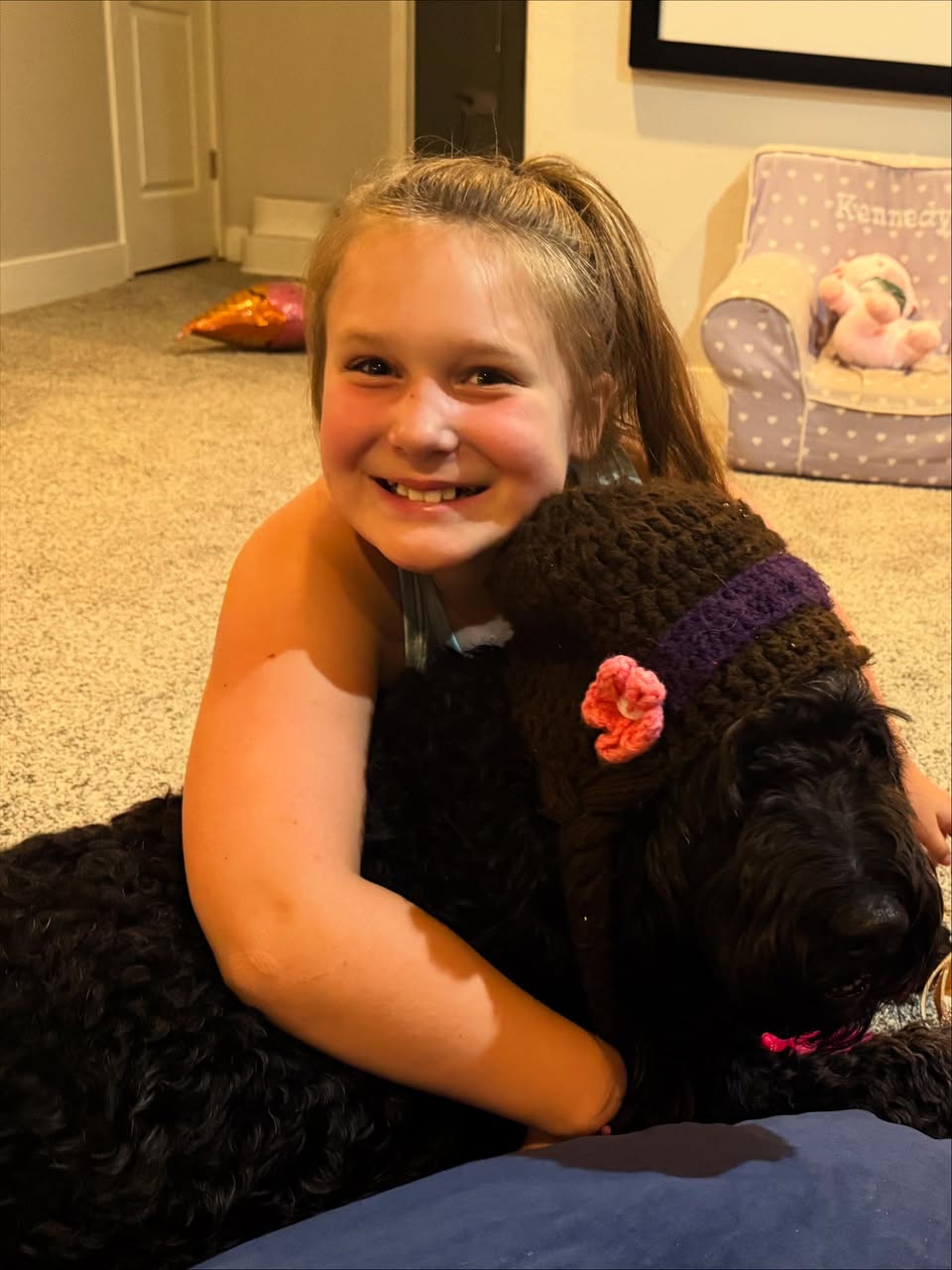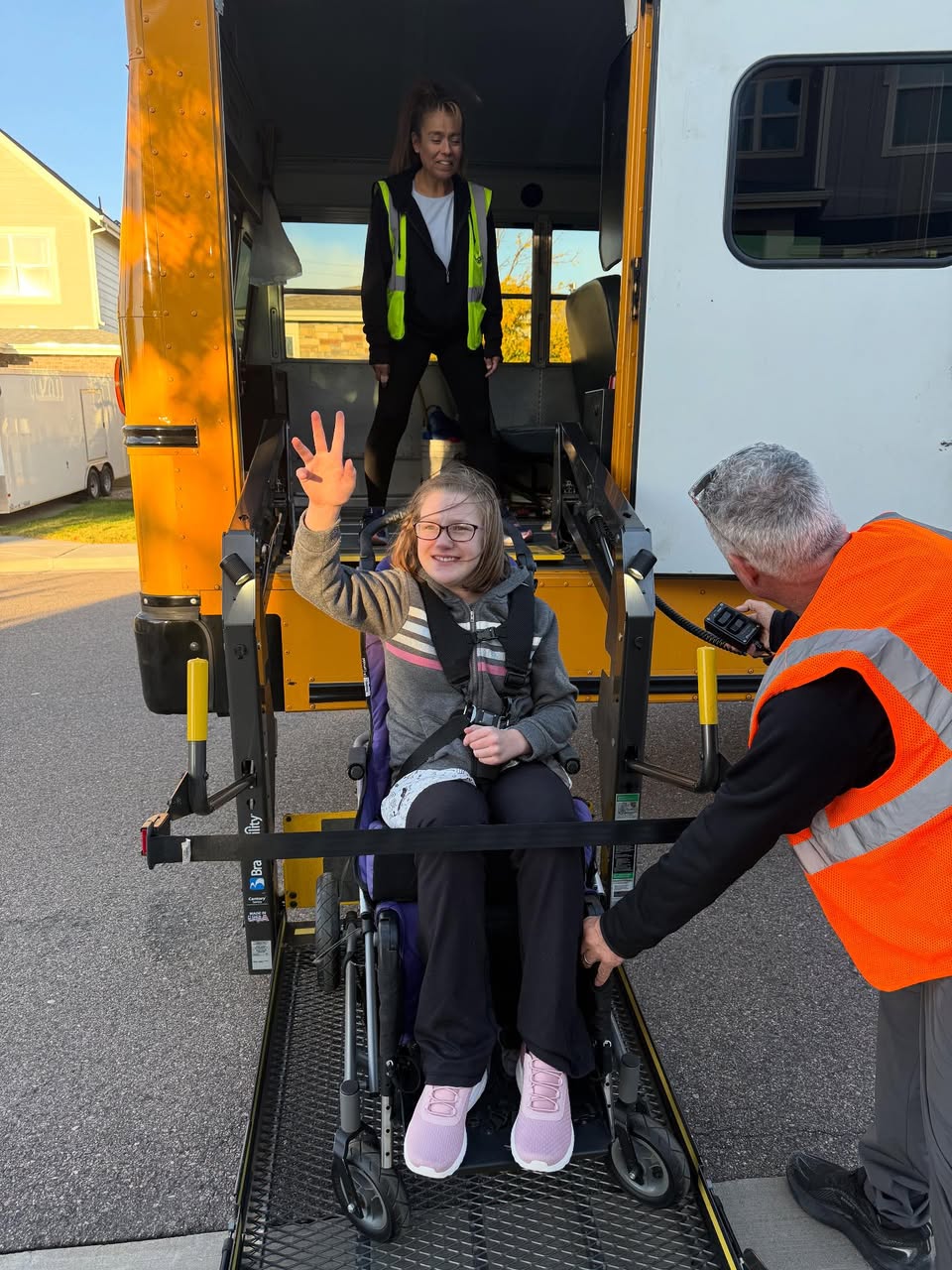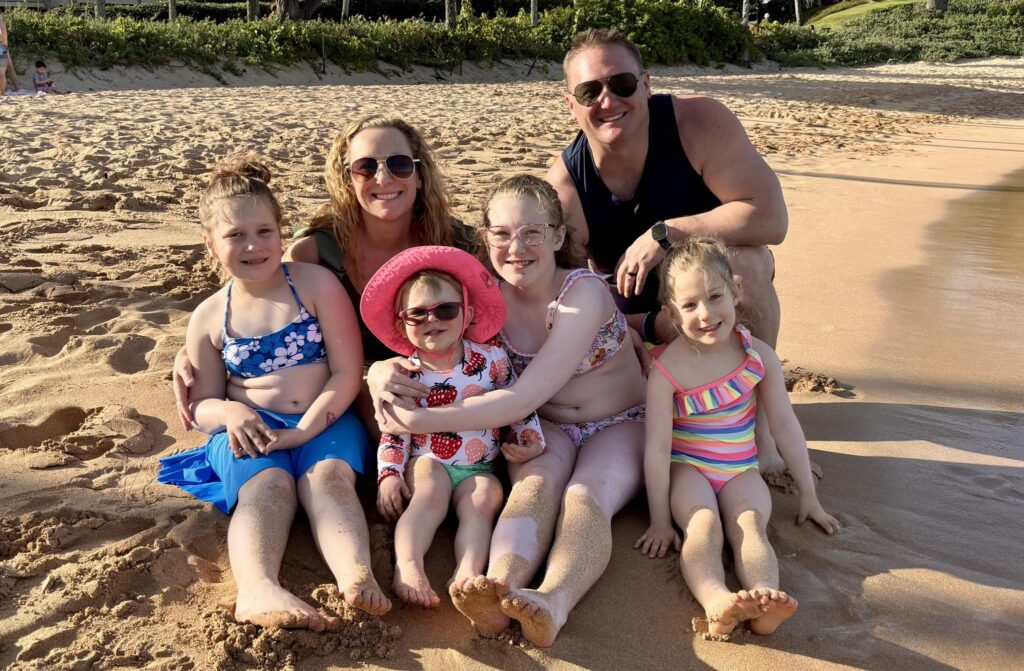Kinley and Kennedy’s story, by their father
“The girls recently hit their 5-year post Gene Therapy mark. It is difficult to know if the treatment helped or not. Regardless, we know the advancement of research has benefited the GM1 community and our time together.”

How did you feel when your children received a diagnosis of GM1?
The first year following diagnosis was longest and most difficult year of our lives. When we received this horrible news, the pain was excruciating.
Now, it has been over 5 years since we received Kinley and Kennedy’s diagnosis of GM1 gangliosidosis. A lot has changed over the last couple of years, but we remain steadfast and committed to raising awareness and funding for a cure for GM1.
How has GM1 gangliosidosis affected your children?
Kinley is 12 years old and is now a Middle Schooler! She loves going to school, being silly, and still has her infectious belly laugh (especially when the dogs sneeze!). She’s been enjoying activities like TOPS Soccer (an adaptive soccer program for special needs in our city), swim lessons, and going to Conductive Education camp weekly. She loves to travel and go on adventures with her family, and is the best big sister always helping however she can.
It has been a rough 18 months for Kinley in many ways. She is now essentially non-verbal, relying on her speech device to express her basic needs (and joke with us – she called mom “waitress” after asking for a drink ). Physically, GM1 is starting to take a toll on Kinley’s body. She has deterioration and pain in her hips, and is now struggling to walk safely. She crawls or scoots up and down stairs and requires full time protective oversight due to fall risk. Recently, we made the decision to start sending her to school in her adaptive stroller as she has struggled to get up the stairs safely, and we will be fitting her for a wheel chair in the near future. She is still pushing herself to be mobile, but these mobility options will help keep her stamina up throughout the day, and overall much safer.
Kennedy is now 9 years old and is still very much our family diva. She is not a morning person, and is known as the “dragon” when she wakes up . After some breakfast, she’s right back to being Elsa or Moana depending on the day. Kennedy has really settled into school this year and is doing a great job participating and retaining a lot of knowledge. Kennedy loves to swim, go to the mountains, and singing her heart out.
As with Kinley, GM1 is also starting to show signs of tightening it’s grip on Kennedy. She is doing pretty well physically, although she can trip and fall from time to time. Speech is the most noticeable challenge for Kennedy, and she is quickly losing her ability to speak. She also has a speech device, though requires some motivation to use it. This is all part of her “accepting” the changes that come with GM1 which she obviously cannot understand. In a lot of ways, this is a really hard stage with GM1 as we know she is struggling social-emotionally as her body changes and she notices she can no longer do things she could before, and can’t do many things her friends and peers can.


How does GM1 impact your family?
Being a family of six, there is never a dull moment. We are navigating our way through the typical challenges of balancing everyone, while adjusting based on the needs of the girls and our family. We love to travel as a family, though it is getting more and more challenging as needs evolve. We are so lucky to have a small army supporting us from keeping then house in order, providing mom and dad respite, and just finding ways to get through the days and weeks.
Realistically, we are just getting to a point with a typical 5 and 3 year old where we are starting to have to split and do things differently. In a lot of ways, it is like being a first time parent because we never had a “typical” 5 year old We also work hard to ensure Kinley and Kennedy’s siblings know that it is not their job to take care of their sisters. However, it is so heartwarming to see how compassionate and caring they are naturally to their big sisters.
how are you managing the situation and coping?
We’re doing all we can to help the girls cope and gain skills to deal with what they’re going through. Despite the uncertainty and evolving challenges of day-to-day life, we are doing everything we can to make great memories as a family and simply enjoy one another. We continue to believe that with this darkness there has to be light.
Connecting with our community – other families living with rare disease – is an invaluable resource. One that makes you feel understood in an otherwise very isolating situation
What do you wish people understood more about rare diseases?
At least in our country, there is a lot of lack of awareness about rare diseases. Not only among the general population, but also among doctors and therapists. We hope that diagnoses can arrive faster—even before birth.

Why should people support the Cure GM1 Foundation and rare diseases?
New medications, therapy methods, and treatments CAN be developed. As you all know, then primary challenge is funding. Rare disease is notoriously hard to fund because, at the end of the day, there just aren’t a lot of patients to benefit. Still, research for GM1 and other lysosomal storage disorders provides hope that if progress can be made, all diseases are that much closer to benefiting.
People should support the Cure GM1 Foundation’s Enzyme Replacement Therapy (ERT) because it can potentially help patients across all age groups and disease stages by directly supplying the missing enzyme. In theory, this could stop disease progression in its tracks, leading to a sustained increase in quality of life. Though it can’t reverse the damage that has been done, the prospect of early detection paired with ERT is very exciting. In fact, we have examples of ERT for other diseases that have made monumental changes in people’s lives – going from and outlook of early death and dependence to one of getting married, graduating college, and living a “normal” life.
Your support can help families like ours find hope and advance research toward a cure for GM1 gangliosidosis. To learn more about how you can help, please visit the Take Action page or Donate here.
